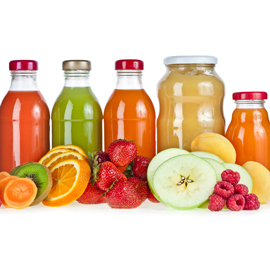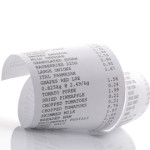
Three weeks after surgery, you’ll probably be ready to move on to pureed foods. The pureed food diet consists of low-residue foods that require minimal chewing and will help prevent obstructions or blockages in your smaller stomach.
You may find it helpful to use a blender, food processor, or strainer to get foods into a smooth consistency. Adding a little liquid like broth, cream soup, or milk can make pureeing cooked foods easier.
At the pureed food diet stage, you’ll be having 3 to 5 meals a day and be able to eat 1 to 2 ounces at a time. Choose 1 ounce of high-protein foods at each meal so that you’re consuming 60 to 70 grams of protein each day. It’s important that, in addition to your meals, you’re also drinking about 64 ounces of fluids every day.
Here’s a guideline of which foods are acceptable and which should be avoided during Stage III:
Pureed Food Diet: liquids
- Juice: You should still limit yourself to no more than 4 to 8 ounces of juice per day. Stick with grape, apple, cranberry, pineapple, orange, or grapefruit juices. Tang, PowerAde, and Gatorade are also acceptable in limited amounts. Avoid apricot, peach, or pear nectars, as well as juices combined with alcohol.
- Other low-calorie fluids: In trying to get 64 ounces of fluids each day, feel free to drink water, sugar-free flavored water, coffee, sugar-free tea (hot or cold), and Crystal Light. Avoid sugary drinks like regular sodas, sweet tea, fruit punch, and lemonade.
Pureed Food Diet: Protein Sources
- Meat: Focus on lean, high-protein meats. Remember that all meats must be skinned and the fat must be removed before they’re pureed. Meats should be baked, broiled, or steamed before pureeing. All meat must be pureed during this stage. Stay away from fried, spiced, or fatty meats, including duck, goose, bacon, and smoked lunch meats.
- Eggs: Pureed eggs are a great source of protein. You’ll need to scramble, poach, or boil your eggs before pureeing them, but avoid fried eggs.
- Dairy products: Acceptable dairy sources include melted cheese, smooth cheese dips, cottage or ricotta cheese, skim or 1% milk, buttermilk, soy or Lactaid milk, and sugar-free flavored low-fat or non-fat smooth yogurts. Avoid any cheeses that contain nuts or onions and products made from 2% or whole milk.
OTHER FOODS
- Nuts and seeds: Most nuts and seeds should be avoided, but smooth peanut butter is allowed.
- Soups and sauces: While most strained and creamy soup varieties are acceptable, including chowders and bisques, you should still avoid tomato- and bean-based soups.
- Cereals: You’re probably not ready for dry cereals, but cream of rice, cream of wheat, strained oatmeal, and thin grits shouldn’t be a problem. You’ll want to avoid high-fiber varieties of cooked cereal.
- Other starches: You’re not ready for bread at this stage, but you can have pureed or mashed potatoes (sweet or white), pasta and noodles, white rice, and couscous. Do not eat cornmeal, chow mein noodles (wheat noodles), or brown or wild rice.
- Vegetables: You will need to puree all vegetables and focus on low-fiber vegetables such as green beans, carrots, squash, spinach, beets, peas, and canned asparagus. Avoid high-fiber vegetables that may cause excess gas, including broccoli, beans, Brussels sprouts, cabbage, corn, cauliflower, cucumber, onions, parsnips, and green peppers.
- Fruits: Choose low-fiber, non-citrus fruits that can be pureed. Avoid berries, cantaloupe, all dried fruits, fresh dates, fresh figs, pears, and tangerines.
- Desserts: You may have sugar-free pudding, sugar-free gelatin, sugar-free fruit whips, and sugar-free ice cream or yogurt, all in moderation. You should not eat regular ice cream, cakes, pies, candy, cookies, doughnuts, sweet rolls, or any desserts made with coconut, raisins, or nuts.
- Condiments: You may use moderation to season your foods with salt, vinegar, herbs, and spices. In addition, you can sparingly add mayo, vegetable oils, butter, margarine, cream, sour cream, or butter to your pureed meals. You should not have pepper, BBQ sauce, chili sauce, ketchup, cocktail sauce, hot sauce, horseradish, or mustard.
Remember at this stage to continue practicing eating slowly and chewing thoroughly. Also, continue to avoid drinking liquids for 15 minutes before and 30 to 60 minutes after your meals.

